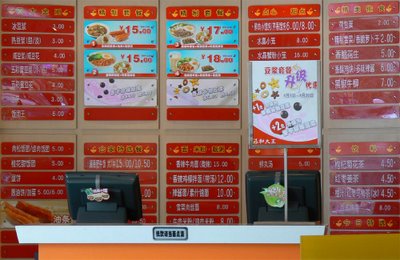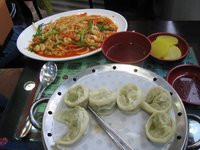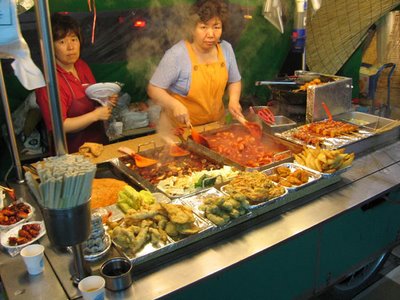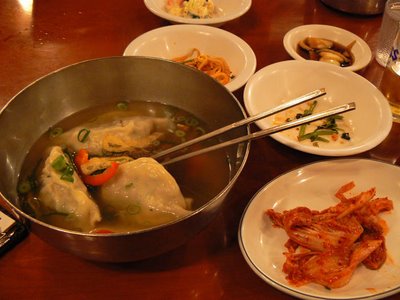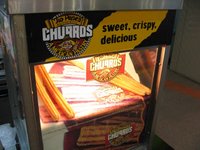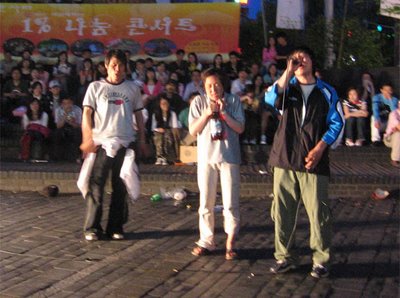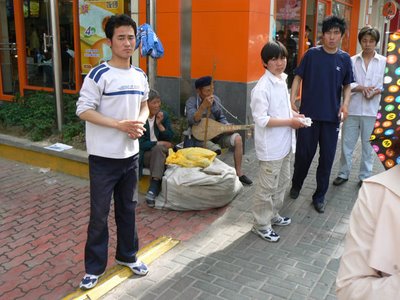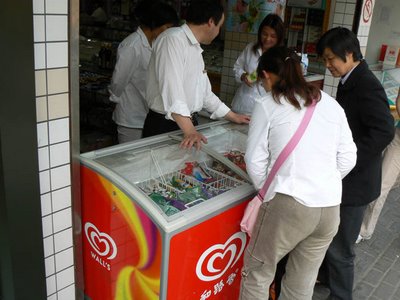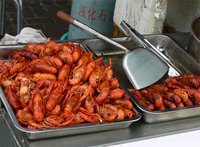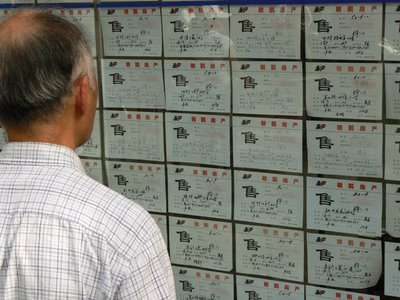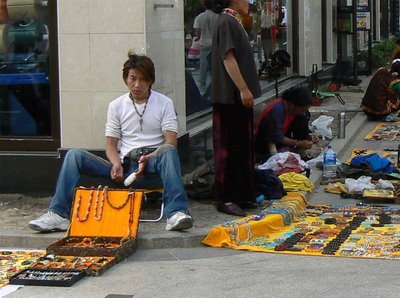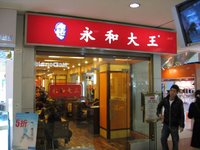 Yonghe Da Wang is a Taiwanese chain restaurant that's popular in Shanghai. I've mentioned it a few times on this blog, and both times I've mentioned it I also brought up McDonald's. That's the obvious, if incomplete, comparison. Nobody would confuse McDonald's or Yonghe with either a fancy restaurant or a friendly neighborhood standby. However it's bright and clean and consistently OK, and a safe bet if you're not familiar with the neighborhood and don't feel like being adventurous. I'll admit that I probably went too much when I first came to Shanghai.
Yonghe Da Wang is a Taiwanese chain restaurant that's popular in Shanghai. I've mentioned it a few times on this blog, and both times I've mentioned it I also brought up McDonald's. That's the obvious, if incomplete, comparison. Nobody would confuse McDonald's or Yonghe with either a fancy restaurant or a friendly neighborhood standby. However it's bright and clean and consistently OK, and a safe bet if you're not familiar with the neighborhood and don't feel like being adventurous. I'll admit that I probably went too much when I first came to Shanghai. 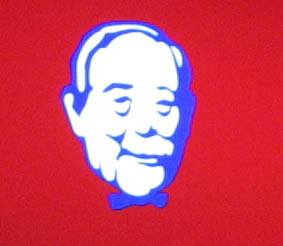
My favorite thing about the restaurant is definitely very stupid. Blowing up the mascot from the picture above, you can see he looks like KFC's Colonel Sanders with a melted face, perhaps he just barely peeked when the Ark of the Covenant was opened. By the way, "Yong He" is a river in Taiwan. There's some other Taiwanese restaurant chains with Yong He in their name, but as far as I'm concerned they're real gross! Oil rolls with sweet soy milk are definitely the thing to get, and I actually think they're pretty tasty. It's a snack of puffy fried bread. It may sound like a doughnut, but they're much fluffier and not nearly as sweet. They are pretty oily, though. They're mixed with a small amount of a strong salty & savory sauce, or some people dip them in the sweet soy milk. They're very large and so the first step is wielding the chopsticks like "Operation," separating them lengthwise into two pieces. The ladies below skipped that step, though.
Oil rolls with sweet soy milk are definitely the thing to get, and I actually think they're pretty tasty. It's a snack of puffy fried bread. It may sound like a doughnut, but they're much fluffier and not nearly as sweet. They are pretty oily, though. They're mixed with a small amount of a strong salty & savory sauce, or some people dip them in the sweet soy milk. They're very large and so the first step is wielding the chopsticks like "Operation," separating them lengthwise into two pieces. The ladies below skipped that step, though.
It's also worth noting above, like most Chinese restaurants there often aren't enough seats at peak times, people will share tables with each other. The restaurant is open 24 hours, I can't imagine there's many people there at three in the morning. Yonghe will also home-deliver food for free.
Anyway, a lot of people in Shanghai will talk bad about Yonghe Da Wang, but I think it's fine if you order the right things. I get the Spicy Chicken Rice, it's served on a bowl of rice, with bok choy and a lightly fried egg. It costs a dollar and a half.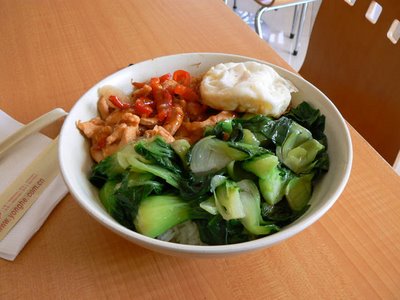
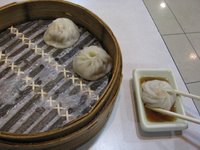 But my favorite part of Yonghe Da Wang is no more. They used to offer a really weird take on Xiaolongbao, a small steamed dumpling with liquid inside. The wrapper was extremely chewy and the inside's flavor was dominated by the soup, which was really oily. The recipe was changed to something more normal, but less interesting. Here's a complete menu below. Like many places, you order at the counter, and get a reciept. Then you sit down, and give the waiter your receipt.
But my favorite part of Yonghe Da Wang is no more. They used to offer a really weird take on Xiaolongbao, a small steamed dumpling with liquid inside. The wrapper was extremely chewy and the inside's flavor was dominated by the soup, which was really oily. The recipe was changed to something more normal, but less interesting. Here's a complete menu below. Like many places, you order at the counter, and get a reciept. Then you sit down, and give the waiter your receipt. 